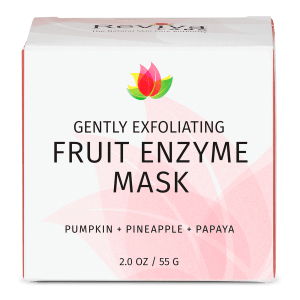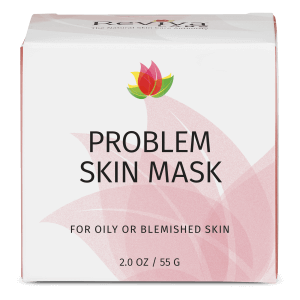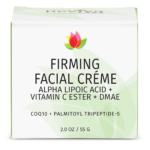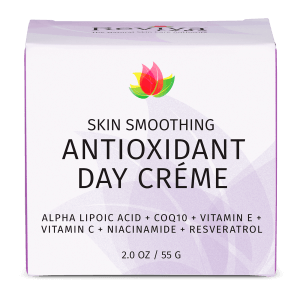Clean Beauty, Natural, Reviva Labs, Skin Care
Are Facial Cleansing Tools Necessary and Safe?
In the quest for radiant, youthful skin, we’ve witnessed an evolution in skincare routines, products, and tools. Among these innovations, facial cleansing tools have emerged as a popular addition to many skincare regimens. But as with any new trend, questions arise about their necessity and safety. This post jumps into the world of facial cleansing tools, examining their benefits, potential risks, and how they fit into our daily skincare rituals.
Understanding Facial Cleansing Tools
Facial cleansing tools range from simple manual brushes to sophisticated electronic devices designed to enhance the process of cleansing the skin. These tools promise not just a deep cleanse but also exfoliation, improved circulation, and even better absorption of skincare products. But with such claims comes the need for scrutiny. Are these tools a must-have in our skincare arsenal, or are they just another passing trend?
The Benefits of Using Facial Cleansing Tools
The primary advantage of facial cleansing tools lies in their ability to provide a deeper clean than what can be achieved with hands alone. They are designed to gently exfoliate the skin, removing dead skin cells, and unclogging pores. This can result in a smoother skin texture, a more even skin tone, and potentially fewer breakouts. Moreover, the massaging action of some of these tools can boost blood circulation, imparting a healthy glow to the skin.
Safety and Effectiveness: A Balanced Perspective
While the benefits of facial cleansing tools are evident, it’s essential to approach their use with a balanced perspective. Not all skin types react the same way to mechanical cleansing. For individuals with sensitive skin, certain types of brushes or vigorous exfoliation can be more harmful than beneficial. It’s crucial to choose a tool that aligns with your skin type and to use it as directed. Overuse or incorrect use can lead to skin irritation, redness, and even damage to the skin barrier.

Selecting the Right Tool for Your Skin Type
Just as skincare products are tailored for different skin types, so too should your choice of facial cleansing tool. For those with oily or acne-prone skin, a tool that offers exfoliation might help in controlling excess sebum and keeping pores clear. However, if you have dry or sensitive skin, a gentler tool that doesn’t strip away natural oils or aggravate the skin is preferable. It’s also worth considering the material and type of bristles (if applicable), ensuring they are non-abrasive and suitable for your skin’s sensitivity.
Incorporating Facial Cleansing Tools into Your Routine
Integrating a facial cleansing tool into your skincare routine should be done gradually. Start by using it once or twice a week to see how your skin responds. If your skin reacts well, you can increase the frequency. Remember, these tools are an adjunct to your routine, not a replacement for the fundamental steps of skincare. They should complement your cleanser, not replace it, and should be used in conjunction with a well-rounded skincare regimen.
The Importance of Hygiene and Maintenance
An often-overlooked aspect of using facial cleansing tools is the importance of hygiene. These tools can harbor bacteria if not cleaned properly, leading to potential skin issues. Ensure you’re cleaning the tool according to the manufacturer’s instructions after each use. Also, pay attention to any recommendations for replacing the heads of electronic brushes or disposable parts, as worn-out components can be less effective and more abrasive.
Professional Insights and Dermatological Advice
While personal experiences and reviews can be helpful, professional insights should not be overlooked, especially when it comes to understanding the effectiveness and safety of facial cleansing tools. Dermatologists and skincare professionals, with their depth of knowledge and experience, can offer invaluable advice on whether a facial cleansing tool is suitable for your skin type and concerns.
Board-certified dermatologist Ife J., as cited on Prevention, highlights the efficacy of facial cleansing brushes. He points out that these tools help to deeply cleanse the skin by removing dirt, oil, and makeup more effectively than manual cleansing alone. This deeper cleansing can be particularly beneficial for those looking to ensure their skin is free from the daily build-up of impurities.
Further adding to this perspective, Dr. Sara Hogan, MD, another board-certified dermatologist quoted on Good Housekeeping, explains the mechanics behind the effectiveness of these tools. According to her, facial cleansing brushes enhance the skin’s cleanliness by increasing the amount of lather formed from cleansers and by providing gentle exfoliation. This process not only cleanses but also improves the overall skin texture, potentially leading to better skincare results.
However, it is crucial to balance the use of these tools with an understanding of one’s skin type and condition. Dermatologist Michael Garner, MD, advises on Oprah Daily about the potential risks associated with the frequent use of a cleansing brush. He warns that over-exfoliation can occur, which is particularly detrimental for those with sensitive skin or conditions like atopic dermatitis or rosacea. In such cases, the physical exfoliation from cleansing brushes could exacerbate the skin condition.
These insights underscore the importance of consulting with skincare professionals and carefully considering how to incorporate facial cleansing tools into your routine. By doing so, you can utilize these tools effectively without compromising the health of your skin.
Understanding the Risks and How to Mitigate Them
While facial cleansing tools offer numerous benefits, including deeper cleansing and improved skin texture, they are not without their risks. One of the most common issues associated with these tools is over-exfoliation. Over-exfoliation can strip the skin of its natural oils and disrupt the delicate balance of the skin’s surface, leading to a range of undesirable effects.
When the skin is over-exfoliated, it often becomes irritated, which can manifest as redness, a burning sensation, or a general feeling of discomfort. This irritation can also lead to increased sensitivity, making the skin more reactive to skincare products and environmental factors. Regular use of facial cleansing tools with too much vigor or too frequently can exacerbate this issue, leading to chronic skin sensitivity.
Furthermore, over-exfoliation can damage the skin’s protective barrier. This barrier is essential in maintaining skin hydration and protecting against external aggressors like pollutants and bacteria. When compromised, the skin becomes more vulnerable to environmental damage and irritants, which can accelerate aging and exacerbate skin conditions like acne and rosacea.
To mitigate these risks, careful and considered use of facial cleansing tools is essential. It’s important to follow the manufacturer’s instructions and use the tool as directed. This includes avoiding excessive pressure during use, as applying too much force can be harsh on the skin. Gentle motions are usually sufficient to achieve the cleansing and exfoliating benefits of these tools.
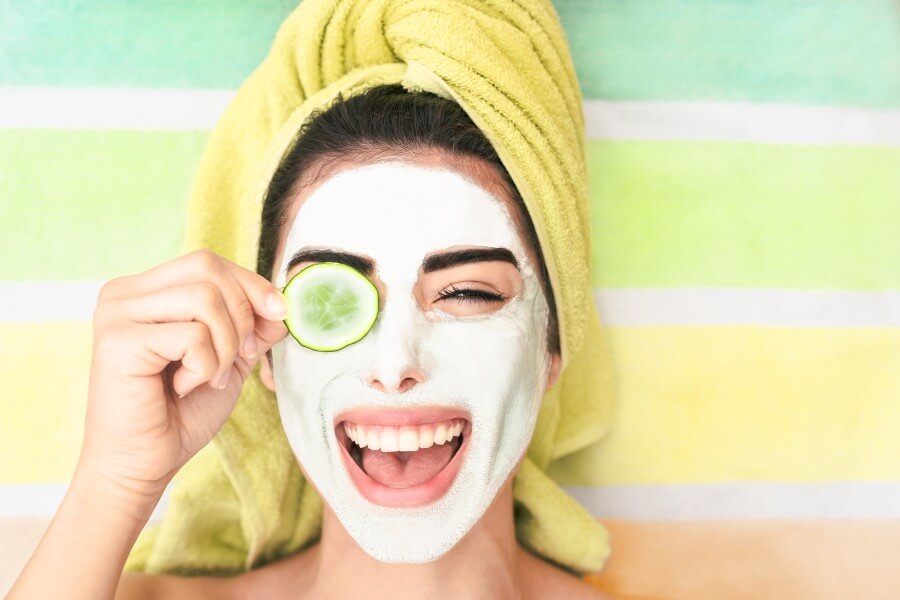
Additionally, it’s advisable to limit the usage of facial cleansing tools, particularly when first incorporating them into your skincare routine. Starting with a frequency of once or twice a week can help your skin adjust to the new cleansing method. If you notice any adverse reactions such as increased dryness, peeling, redness, or irritation, it’s important to reduce the frequency of use or take a break from the tool altogether.
Keep in mind, while facial cleansing tools can be a valuable addition to a skincare routine, they must be used with care and attention to avoid potential negative effects on the skin. By using these tools responsibly and listening to the needs of your skin, you can enjoy their benefits while maintaining healthy, balanced skin.
The Role of Facial Cleansing Tools in Acne Management
For individuals struggling with acne, facial cleansing tools can be a double-edged sword. On one hand, they can help in deep cleansing the pores, which is beneficial in managing acne. However, if used improperly or too aggressively, they can exacerbate the condition by causing irritation and spreading bacteria. It’s crucial for acne-prone individuals to consult a dermatologist before incorporating a facial cleansing tool into their routine.
Comparing Manual and Electronic Facial Cleansing Tools
The market offers a variety of facial cleansing tools, both manual and electronic. Manual tools, like simple facial brushes or sponges, provide control over the pressure and speed of cleansing. Electronic tools, on the other hand, offer convenience and often come with various settings to suit different needs. The choice between manual and electronic depends on personal preference, skin type, and specific skin concerns.
Sustainability and Environmental Considerations
In an age where environmental impact is a growing concern, it’s worth considering the sustainability of facial cleansing tools. Reusable tools are generally more eco-friendly than disposable ones. If opting for an electronic tool, consider its durability and the company’s policies on recycling and environmental impact. Sustainable beauty is about making choices that are not only good for the skin but also for the planet.
Balancing Benefits and Risks
In conclusion, facial cleansing tools can be a valuable addition to a skincare routine, offering benefits like deeper cleansing and improved skin texture. However, their safety and necessity largely depend on individual skin types, proper usage, and maintenance. It’s essential to approach these tools with a balanced perspective, understanding both their potential benefits and risks. Consulting with skincare professionals and listening to your skin’s needs will guide you in making the most informed and beneficial choices for your skin’s health and beauty.







